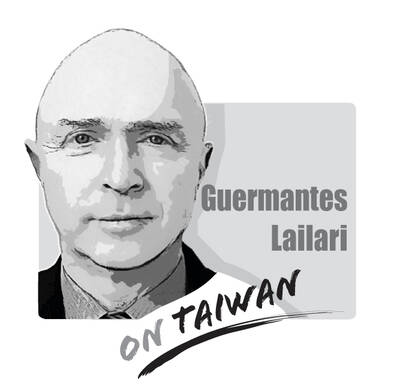Taiwan’s business-friendly environment and science parks designed to foster technology industries are the key elements of the nation’s winning chip formula, inspiring the US and other countries to try to replicate it. Representatives from US business groups — such as the Greater Phoenix Economic Council, and the Arizona-Taiwan Trade and Investment Office — in July visited the Hsinchu Science Park (新竹科學園區), home to Taiwan Semiconductor Manufacturing Co’s (TSMC) headquarters and its first fab. They showed great interest in creating similar science parks, with aims to build an extensive semiconductor chain suitable for the US, with chip designing, packaging and manufacturing.
The representatives last month also attended an annual forum hosted by the Taiwan High-Tech Facility Association to discuss the creation of advanced chip fabs. Association members such as United Integrated Services Co and Marketech International Corp help TSMC build manufacturing facilities in Taiwan and overseas, and are known for their incredible efficiency. It takes one-and-a-half to two years for TSMC to build a new factory, outpacing the three to five years it takes global rivals, such as Intel Corp, to set up a fab.
Operating a chip plant in the science park is efficient, lowering operating costs and fostering technology development, which are essential for firms to be able to produce new and cost-competitive technologies. Companies in Taiwan’s science parks are eligible for lower rent and utility costs, and can more easily acquire talent, compared with traditional “industrial areas” created by the central and local governments.
To facilitate the formation of industrial clusters in the science parks, Taiwan set up “single windows” to assist companies in solving problems related to factory construction or the creation of start-ups. With heavy government investment, Taiwan’s semiconductor industry cluster and TSMC were created in the Hsinchu Science Park more than 30 years ago. The results are significant, as the semiconductor industry has become a key pillar of Taiwan’s economy.
The “Taiwan model” has even become a talking point for Taipei’s negotiations with Washington to lower the US’ “reciprocal” tariff and gain preferential rates for semiconductors and related products under Section 232 of the US Trade Expansion Act of 1962. Vice Premier Cheng Li-chiun (鄭麗君), who leads the tariff talks, earlier this month said that both sides are exploring the possibility of expanding investment in the US through the “Taiwan model,” under which Taipei would help the US build industrial parks, similar to those in Taiwan.
Local semiconductor component and equipment suppliers had previously avoided setting up operations in the US given the expensive labor costs, but the situation has reversed. Two or three years ago, most Taiwanese corporate executives thought it would be a long shot for the US to reproduce the Hsinchu Science Park. Some said it would not happen during their lifetime. Now they have changed their tune after TSMC increased its total investment in the US to US$165 billion, which implies a significant increase in demand.
The development raises concerns about the outflow of experienced talent, which could undermine the development of the local semiconductor industry and Taiwan’s economy. Compared with imminent tariff risks and escalating geopolitical risks, that should be a longer-term worry, as Taiwan has spent three decades perfecting its chip ecosystem, which cannot be overturned in the blink of an eye. Facing such challenges, Taiwan should consider how to use this business opportunity to spur an industrial transformation. For smaller-scale component and development suppliers, it represents a once-in-a-lifetime chance to expand overseas; for others, it could mean a painful restructuring.

Chinese state-owned companies COSCO Shipping Corporation and China Merchants have a 30 percent stake in Kaohsiung Port’s Kao Ming Container Terminal (Terminal No. 6) and COSCO leases Berths 65 and 66. It is extremely dangerous to allow Chinese companies or state-owned companies to operate critical infrastructure. Deterrence theorists are familiar with the concepts of deterrence “by punishment” and “by denial.” Deterrence by punishment threatens an aggressor with prohibitive costs (like retaliation or sanctions) that outweigh the benefits of their action, while deterrence by denial aims to make an attack so difficult that it becomes pointless. Elbridge Colby, currently serving as the Under
The Ministry of the Interior on Thursday last week said it ordered Internet service providers to block access to Chinese social media platform Xiaohongshu (小紅書, also known as RedNote in English) for a year, citing security risks and more than 1,700 alleged fraud cases on the platform since last year. The order took effect immediately, abruptly affecting more than 3 million users in Taiwan, and sparked discussions among politicians, online influencers and the public. The platform is often described as China’s version of Instagram or Pinterest, combining visual social media with e-commerce, and its users are predominantly young urban women,
Most Hong Kongers ignored the elections for its Legislative Council (LegCo) in 2021 and did so once again on Sunday. Unlike in 2021, moderate democrats who pledged their allegiance to Beijing were absent from the ballots this year. The electoral system overhaul is apparent revenge by Beijing for the democracy movement. On Sunday, the Hong Kong “patriots-only” election of the LegCo had a record-low turnout in the five geographical constituencies, with only 1.3 million people casting their ballots on the only seats that most Hong Kongers are eligible to vote for. Blank and invalid votes were up 50 percent from the previous
Japanese Prime Minister Sanae Takaichi lit a fuse the moment she declared that trouble for Taiwan means trouble for Japan. Beijing roared, Tokyo braced and like a plot twist nobody expected that early in the story, US President Donald Trump suddenly picked up the phone to talk to her. For a man who normally prefers to keep Asia guessing, the move itself was striking. What followed was even more intriguing. No one outside the room knows the exact phrasing, the tone or the diplomatic eyebrow raises exchanged, but the broad takeaway circulating among people familiar with the call was this: Trump did